Die Zauberflöte - The Magic Flute
The Magic Flute is Mozart’s statement about finding one’s way in this strange world. it is a fairy tale that follows Prince Tamino and the bird-catcher Papageno on their quest to rescue Pamina. Throughout their journey, they face spiritual challenges that lead them to enlightenment in the end.
It was Mozart’s last completed opera. When finishing the score he was ill, under severe economic stress, and possibly quite depressed. His La Clemenza di Tito, written for the coronation of Leopold II in Prague, didn’t go as well as Mozart had hoped. To that, Mozart’s wife, Costanze Weber left for Baden.
Back in Vienna, his friend and colleague as well as impresario Emanuel Schikaner insisted and facilitated the composer’s efforts. So, Mozart reluctantly continued working on his masterpiece. At the premiere after the first act, Mozart was so negative about the response from the audience that he wanted to just quit and go home. Again Schikaneder together with other friends stepped up, and he finished the opera.
The fact of the matter is that The Magic Flute today is one of the most-played operas worldwide. More so, apart from the Prague opera mentioned above, all of Mozart’s four last operas, Cosi fan tutte, Le Nozze di Figaro, Don Giovanni, and this one, all composed in the composer’s last years, while fighting his economic problems, health issues, and lack of reconìgnition, are today in the top-12 of all operas worldwide. Maybe we can learn something from that…
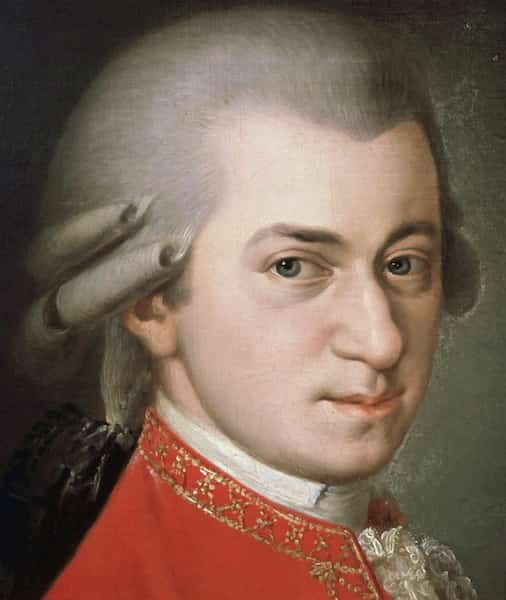 Premiere – September 30, 1791, Theater auf der Wieden, Vienna, Austria
Premiere – September 30, 1791, Theater auf der Wieden, Vienna, Austria
Composer – Wolfgang Amadeus Mozart
Librettist – Emanuel Schikaneder
Running Time – From 2 hours and 10 minutes till almost 3 hours depending on tempi and cuts, plus Interval
Two Acts
Ouverture – 7 minutes
The first Act is somewhat shorter than the second Act.
In German
Main characters
- Tamino – Light/Lyric Tenor. Young Prince
- Pamina – Soprano. Daughter of the Queen of the Night.
- Papageno – Baritone. A Bird-hunter and Tamino’s sidekick. (Papageno is signed as Basso in the original Mozart score. At the time, in Vienna, it wasn’t common to use the Baritone label. Bass included the Baritone voice. The role is sung by a variety of voices today. From basses to light baritones. It needs good interpretation skills.)
- Papagena – Soprano. The Bird Hunter’s girlfriend to be.
- Sarastro – Deep Bass. High Priest. A sort of authoritative Father/King character.
- Monostatos – (Comical Role), Tenor. Chief for the slaves / Sarastro’s handyman. (He’s a moor, that is, black. And he’s portrayed as neither very smart nor with acceptable morals.)
- Queen of the Night – Coloratura Soprano. Mother of Pamina, and Sarastro’s rival.
Download this short Pdf-guide. Print it, fold it, and keep it in your pocket as a help when you’re at the Opera. Please keep your phone turned off when inside the theater.
Background – The Magic Flute is set in…
Egypt… maybe.
It doesn’t matter though as the story is told in a fantastic landscape with fantastic characters. It’s a dream. Even the period is unimportant. Often the costumes bring us to imagine a 1700-environment, but it could be told in any context, as it’s a fairy tale.
The Magic Flute is a Singspiel, a Sung drama. While in Italy the tradition of recitativo, sung dialogue, was very strong, in England, Germany, and France, the use of spoken language was common. At least in the theatres outside the court. The Magic Flute is a comedy, which a Singspiel almost always was. Anyway, it was always lighter, funnier, and more parodic than the Italian opera. The songs were simpler, often strophic, and the language was more burlesque and understandable… It was always in the local dialect. The operas for the court, even in Austria, were all in Italian, at this time.

Today, The Magic Flute is often performed translated into the local language.
Wolfgang Amadeus Mozart was part of a Mason Lodge, and the opera is full of references to Masonry and its symbols. It’s also full of references to the Enlightenment. The whole idea of the contraposition between Sarastro (Symbolizing reason) and the Queen of the Night (Symbolizing the forces, in this world, that obstruct reason. Open to various interpretations.) is based upon the Enlightenment theories. The contraposition between male and female is also very obvious. And guess who has the upper hand there?
The Magic Flute premiered at the Theater auf der Wieden. This was, at the time, a very successful theater in the suburbs of Vienna. The public was ordinary people, very different from his normal audience at the noble Palaces. The librettist, director of the theater, and fellow masonic, Emanuel Schikaneder, played Papageno. Mozart’s friend and colleague Benedikt Schack sang Tamino and Mozart’s sister-in-law Josepha Hofer did the Queen of the Night.
The premiere was on September 30, 1791. Mozart passed away on December 5, of that same year. This was his last Opera.
Plot
Ouverture.
First Act
Being a fantasy story in a fantastic landscape, there are a lot of characters, a lot of different locations, and many changes of scenes. Many dialogues, arias, and other musical numbers also are very short. Stay alert!
Scene 1 – A rocky landscape.
Tamino is chased by a terrible dragon.
Three ladies, attendants of the Queen of the Night, save him by killing the dragon. Tamino faints, and the three ladies admire Tamino’s beauty. They leave.
Papageno enters and sings the famous Der Vogelfänger bin ich ja (Yep, I’m a Bird-catcher…).
Papageno has his own theme. And he’s playing it on a Pan-flute. C, D, E, F, and G.
Tamino thinks this new guy killed the dragon, and Papageno agrees promptly. The three ladies return and punish Papageno for having lied, by sealing his mouth. They show a picture of Pamina to Tamino and he immediately falls in love. He sings Dies Bildnis ist bezaubernd schön. (This image is so adorably beautiful.).
The Queen of the Night appears and sings O zittre nicht, mein lieber sohn (Do not tremble, my dear son.), the first of her two extremely difficult arias. She then explains the situation:..
Pamina, her daughter, is captured by a fierce demon called Sarastro. If Tamino frees her, she will be his (…No matter what Pamina thinks about it.).
Tamino gets a magic golden flute, and Papageno gets a magic glockenspiel/set of bells. They will also have three child-spirits, to guide them in their quest.
These are sometimes sung by sopranos, especially in cd-recordings where nobody sees them anyway.
So, they begin their journey to save the Princess.
Scene 2 – Sarastro’s Palace.
Papageno shows up just as Monostatos tries to have his way with Pamina. The two men both see the devil in the other, and Monostatos runs away. Papageno succeeds in explaining who he is, who she is, and that he’s been sent by a Prince to save her. He also mentions that the Prince is in love with her.
They sing a duet Bei Männern welche Liebe fühlen, praising true love, and hoping for Papageno too, to find a soulmate soon.
 Scene 3 – A Grove in front of three temples.
Scene 3 – A Grove in front of three temples.
The three child-spirits tell Tamino to be constant, patient, and discreet, and to not forget it.
The number three, which in the Masonry is very important, is used all over by Mozart. There are three ladies, three child-spirits, three priests, three temples, and if you’re observant, you can find threes in the music as well.
Entering the Temple of Wisdom, Tamino meets the Speaker, an old priest (not a speaker but a Bass), from whom he learns nothing but more riddles.
When he’s alone again, he decides to try the magic flute. Wild animals appear, but he still can’t find Pamina. The chorus from behind the stage encourages him, singing that Pamina is still alive.
Tamino sings Wie stark ist nicht dein Zauberton (How strong is not your magic sound…), and Papageno answers him from a distance with his flute, C, D, E, F, and G. At least, he’s here somewhere.
The First Tamino, Benedikt Schack, was a good flutist as well as a fine tenor. Mozart obviously included the flute thinking that Tamino should play it on stage. Today it’s difficult to cast Tamino like that. Instead, the flute is played from the orchestra pit.
Now, back to Papageno and Pamina who are trying to escape Monostatos and his slaves. Monostatos gains on them, but when all seems lost, Papageno too remembers his magic glockenspiel. He plays it, and the slaves all become as if in a trance. They dance and move to the marvelous music. Das klinget so herrlich… Das klinget so schön. (It sounds so wonderful… So marvelous…)
Papageno and Pamina escape, but immediately they hear Sarastro approaching. Papageno is terrified of the Demon, but Pamina says they have to tell the truth even if it could get them in trouble.
Sarastro, who really isn’t a Demon but a rather nice guy, forgives them both. But he tells Pamina that he cannot let her return to her mother.
– You would lose your happiness if I left you in her hands, he says.
He continues:
– A man must guide your hearts, for without him all women tend to step outside their own sphere of activity. (… Remember, we’re in the 18th century, and that Emanuel Schikaneder, who wrote the text, was quite a ladies-man as well as a male chauvinist.)
Here, Monostatos drags in Tamino. When he wants a reward from Sarastro, The High Priest sends him off to be flogged.
Now, to be worthy of Pamina, and be admitted to the cult of Osiris and Isis, he must pass three trials. So, Tamino and Pamina are brought into the temple while the chorus of Priests sings wenn tugend und gerechtigkeit… (When virtue and justice strew with fame the path of the great.).
 Second Act
Second Act
Scene 1 – A grove of palms.
The Priests of the temple of Osiris and Isis.
The scene starts with an orchestra piece – The March of the Priests. If you’re familiar with the Canadian National Anthem… That’s it.
Then Sarastro sings O Isis und Osiris, (Oh Isis and Osisris).
Now, if they haven’t found a real bass, with a lower register that makes the chandeliers vibrate, then he will be in trouble here. This is a very low score.
They all agree on starting the trials..
Scene 2 – The forecourt of the temple.
The Priests talk to Tamino and Papageno.
It’s impressive how modern and witty Mozart was already back in his days. The humor, and the language in the dialogues is great entertainment even today. Many other musical comedies from the 18th century have to be modernized and rewritten to make any sense to a modern audience, but Mozart normally doesn’t need anything, He was centuries before his time. It’s no wonder they didn’t understand him in the 1700s.
The Priests tell them about the first trial. They also tell Papageno that there’s a girl for him too, Papagena, who’s his equal and his mirror, beautiful and young.
The objective here is to not talk to women. Not to Pamina and not to Papagena, and not to anybody else of the female sex.
The three ladies appear to try and trick them to speak to them, but they keep more or less silent. Papageno with some help from Tamino.
Scene 3 – A Garden.
Pamina is sleeping. Monostatos, in love, sings a very short, but very interesting aria. Alles fühlt der Liebe Freuden. Firstly because the first line of the melody is exactly the first line of Largo al Factotum from The Barber of Seville by Rossini, maybe the most famous of all Rossini’s Opera Arias.
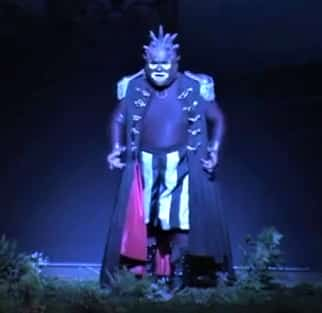
Secondly, because of how Mozart describes moor, colored. This is a time when the European idea of superiority was well-founded. Black was interesting, exotic, but inferior. Modern productions often don’t portray Monostatos as black. And his Moorish looks are of no importance to the story whatsoever. He is an outcast. Not very nice, but not very accepted either. Here’s some of the text translated:
Everyone feels the joys of love… but I am to forswear love because a black man is ugly.
Do I not then have a heart? Am I not flesh and blood?
…
A white woman has taken my fancy. White is beautiful! I must kiss her!
Moon… If it should offend you too much, then close your eyes!
—————-
The Queen of the Night enters. Pamina wakes up. Monostatos hides.
Pamina tells her mother that the Prince she sent her, has joined Sarastro. Her mother isn’t happy about that, to say the least. She explains that Pamina’s father was the former Temple High Priest but at his death, he declared Sarastro as his heir instead of her. He said:
– Do not seek what’s beyond a woman’s grasp.
The Queen of the Night gives a knife to Pamina and tells her that the only way she can save herself is if she kills Sarastro.
She then fires away with the second of her Arias. Der Hölle Rache kocht in meinem Herzen (Hell’s Vengeance Boils in My Heart).
This is one of those encore-after-a-successful-concert pieces. It’s something with which you can stun the audience and if the Queen of the Night is a good singer, she can bring down the house at the end, even though it’s not the biggest role.
When the Queen is gone, Monostatos jumps out of his hiding place. He tells Pamina that she has to love him, or he’ll reveal the murder-plans to Sarastro. She refuses, and he tells Sarastro, who answers him:
– I know your soul too well… Be gone!
Not even when he tries to save Sarastro’s life, are his services appreciated.
Pamina asks forgiveness for her and for her mother. Sarastro sings In diesen heil’gen Hallen kennt man die Rache nicht! (Within these sacred halls, revenge has no place…).
Scene 4 – A Great Hall.
Tamino with Papageno, who complains about the lack of water and of everything else. An old woman brings a cup of water to him. After some chit-chat, she says that she’s eighteen years and two minutes and that her boyfriend’s name is Papageno.
The child-spirits show up for the second time. They bring food and beverages, as well as the magical instruments, the flute and the glockenspiel.
Tamino plays his flute, Pamina runs to him, but he can’t talk to her. She tries in any way she can to make him look at her and speak but doesn’t say anything. Devastated, she sings the aria Ach, ich fühl’s, es ist verschwunden (Oh, I feel it’s gone…).
 Scene 5 – The Pyramids.
Scene 5 – The Pyramids.
The Chorus sings O isis und Osiris… A beautiful piece that demonstrates the genius of Mozart, and how modern he was at his time. If you compare this with what other composers in Vienna at the time, wrote, this is in another universe.
The final trials. Tamino and Pamina are instructed to bid each other a final farewell. The word “final” isn’t encouraging. That on top of Tamino’s silence is just too much. Pamina is heartbroken.
Papageno enters. The Speaker grants him a glass of wine, and asks if that’s all he wants in this world?
Papageno answers with the Aria, Ein Mädchen oder Weibchen… (A sweetheart or a wife…).
The old woman comes back and asks him to marry her. If he does not, he will be imprisoned there forever… And drink only water. That last phrase convinces him and he accepts. The old hag turns eighteen and she really is Papagena. But he’s still not worthy, so she’s dragged away by the Speaker.
Scene 6 – A Garden.
This is where Pamina tries to kill herself. She is convinced that Tamino doesn’t love her. The child-spirits save her, by convincing her that Tamino truly loves her and that he’s risking his life for her. Pamina, overwhelmed by joy and together with the spirits, hurry away to find her love… And to give him the flute (… that he seems to have difficulties holding on to.)
Scene 7 – Two Great Mountains.
One mountain of fire and one of water. This is the last two trials. Tamino has to go through fire and water to be initiated in the cult of Osiris and Isis.
Two guards sing Der, welcher wandert diese Straße voll Beschwerde (He who travels these laborious paths will be purified by fire, water, air and earth.)
More Masonic References.
Pamina comes rushing in and the Guards finally allow Tamino to talk. And so they can declare each other eternal love. Pamina wants to follow him into the dangers of the mountains. She gives him the flute and with the power of the magic music, they set off to face death.
Tamino plays a tune on the flute, and they pass through the fire unharmed. Then he plays the same tune again, and they pass the water-trial as well. Music really is a powerful weapon. With a flute in your pocket, you can accomplish anything…
Scene 8 – Back in the garden from scene 6.
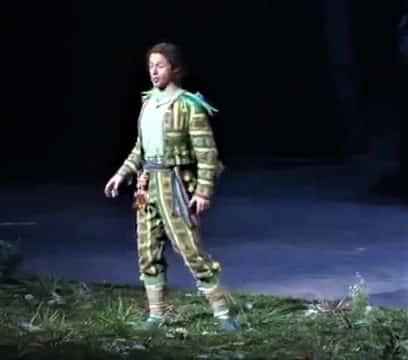
Now it’s Papageno’s turn to try and kill himself. He’s desolated over the loss of Papagena. Again, the child-spirits come to rescue, and to indicate what he must do… Obviously. He must play his magic instrument – The glockenspiel. And Papagena appears.
Here’s a very cute duo Pa..pa..pa…
———-
Monostatos has changed allegiance. Now, he’s with the Queen of the Night (… Understandably). She has promised him her daughter if he kills Sarastro (… Did we hear that one before?).
Anyway, the two of them, together with the three ladies from the first Act are going to destroy the temple, but before they can attack, they are magically thrown into everlasting night. And that’s that.
Last scene – The Sun-Temple.
Sarastro declares that the sun has defeated the night, Tamino’s found his Pamina, Papageno’s found his Papagena, and everybody is happy. End of story.
Things to look out for.
First Act.
Scene 1. Three very famous Arias. First Papageno’s Der Vogelfänger bin ich ja. Then Tamino’s Dies Bildnis ist bezaubernd schön. And last the Queen of the Night with her sparkling O zittre nicht, mein lieber sohn.
Scene 2. Check how they portrait Monostatos. Is he dark-skinned…?
Scene 3. The children’s trio sing. When Tamino sounds the flute, wild animals appear. How do they resolve that?
Second Act.
Scene 1. The chorus sings O Canada… No, it’s not exactly the same, but close. Then Sarastro sings O Isis und Osiris. A beautiful superlow-Bass-Aria.
Scene 2. Tamino and Papageno get their quests.
Scene 3. Monostatos sings Alles fühlt der Liebe Freuden. Very close to Largo al Factotum from The Barber of Seville by Rossini. A short while after that, there’s what could be the peak of the performance… Der Hölle Rache kocht in meinem Herzen. If the Queen of the Night is awesome, (like she should be) expect enthusiastic applause here.
Scene 4. Papagena dressed up as an old woman. Pamina sings Ach, ich fühl’s, es ist verschwunden. Sad and beautiful.
Scene 5. Chorus: O Isis und Osiris. The final tryouts begin. Papagena finally shows up as herself.
Scene 6. Pamina’s suicide scene.
Scene 7. This is where the love-couple walk through fire and water playing the flute.
Scene 8. Papageno and Papagena sing Pa..pa..pa..
Scene 9. Final
About the opera
In the summer of 1791, Mozart was depressed, overworked, lonely, and in a deep financial crisis. He struggled to make ends meet and he was risking going to court because of unpaid credits.
At this point, he got two important commissions. First, an anonymous person ordered a Requiem, a mass for the dead, from him, paying in advance and in cash. Secondly, he got an order for an opera to be performed at the coronation of King Leopold II of Bohemia.
He had started working on The Magic Flute already in spring that same year. On the 26th of July Amadeus’ wife Constanze gave birth to their sixth child, Franz Xaver Wolfgang.
- The Premiere of “La Clemenza di Tito” in Prague, September 6
- The Premiere of “The Magic Flute” in Vienna (with Mozart conducting), September 30
- The Premier of the Clarinet Concert in A-major in Prague, October 16
- “Kleine Freimaurer Kantate” for the inauguration of the new Masonic Temple (with Mozart conducting), November 18. This is the last complete work by the composer.
- Requiem was not completed
- Mozart died on December 5.
It could seem like a very productive period, but Mozart wrote over 600 compositions, of which 68 symphonies, 59 concertos, and 23 Operas, during his short life. That is 1 Opera, 3 symphonies, 3 concertos, and 20 other compositions a year, considering 20 years of productivity. That, plus traveling all over Europe, conducting, playing the piano and the violin. He was a volcano of productivity.
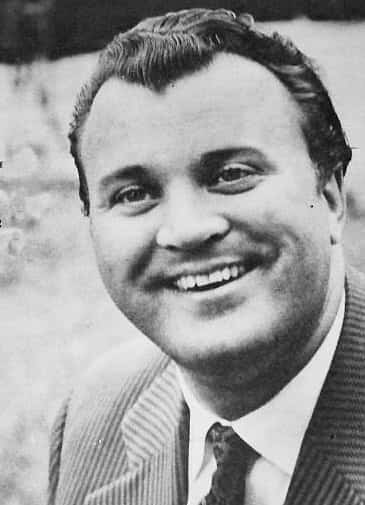
The Swedish tenor Nicolai Gedda left, and the American soprano Anna Moffo right. Two of the vocally best Tamino and Pamina to this day.
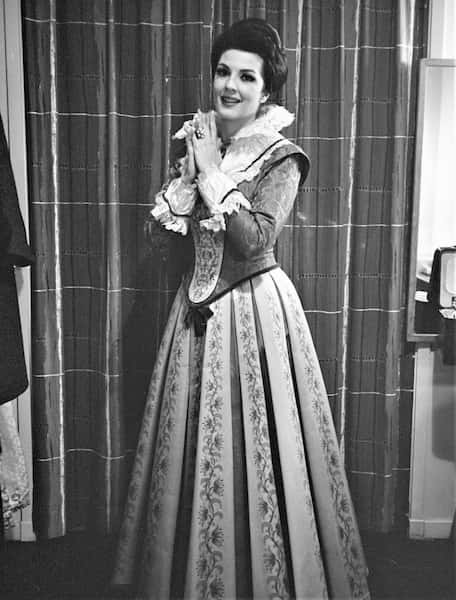
About the composer
Wolfgang Amadeus Mozart probably was the greatest musical genius of all time. He was born in 1756 in Salzburg and started out as a wonder-child, concerting his way through the courts of Europe together with his father Leopold, and his sister Marianne. His father taught him to play the piano, the violin, and everything about music theory.
He ended up in Vienna, as Vienna was the center for music and arts of continental Europe
There he worked as a freelance composer, taking commissions for composing, conducting, and playing. As such, he didn’t have the security and steady payment he would have had if he was appointed a title at the court or the catholic church. Still, he earned very well. So well, that he could have been a very rich man. He wasn’t though, and the reason is probably that he couldn’t handle money. He spent, he gambled, and he surely didn’t understand the basics of a sound economy.
He and his family lived well, though, and at his death, he wasn’t forgotten by his fellow Viennese, as is sometimes described. He still was one of the most famous musicians and composers in Vienna.
Today he is probably the best known classical composer there is. Although his music today isn’t as immediate as some of his later colleagues, there’s no doubt that he was modern for his time, by hundreds of years.
Fun facts
- The two arias of the Queen of the Night are very demanding for the singer. Both require an F6, which is the highest written note in any Opera Aria ever. In the second aria, Der Hölle Rache kocht in meinem Herzen, you will have to nail it no less than eight times.
- When Mozart was six, he and his sister played at the Habsburg summer residence outside Vienna. He met the future queen of France, Marie Antoinette. She was two months older than Wolfgang and he immediately fell in love. She helped him when he slipped, and he promptly proposed to her. She didn’t accept.
- The Magic Flute received a neutral response from the audience at the premiere. But very soon after, it started having incredible success. It is today one of the most performed operas in the world. On Operabase.com it was in second place from 2004 to 2019 worldwide, with 9264 performances.
Download this short Pdf-guide. Print it, fold it, and keep it in your pocket as a help when you’re at the Opera. Please keep your phone turned off when inside the theater.